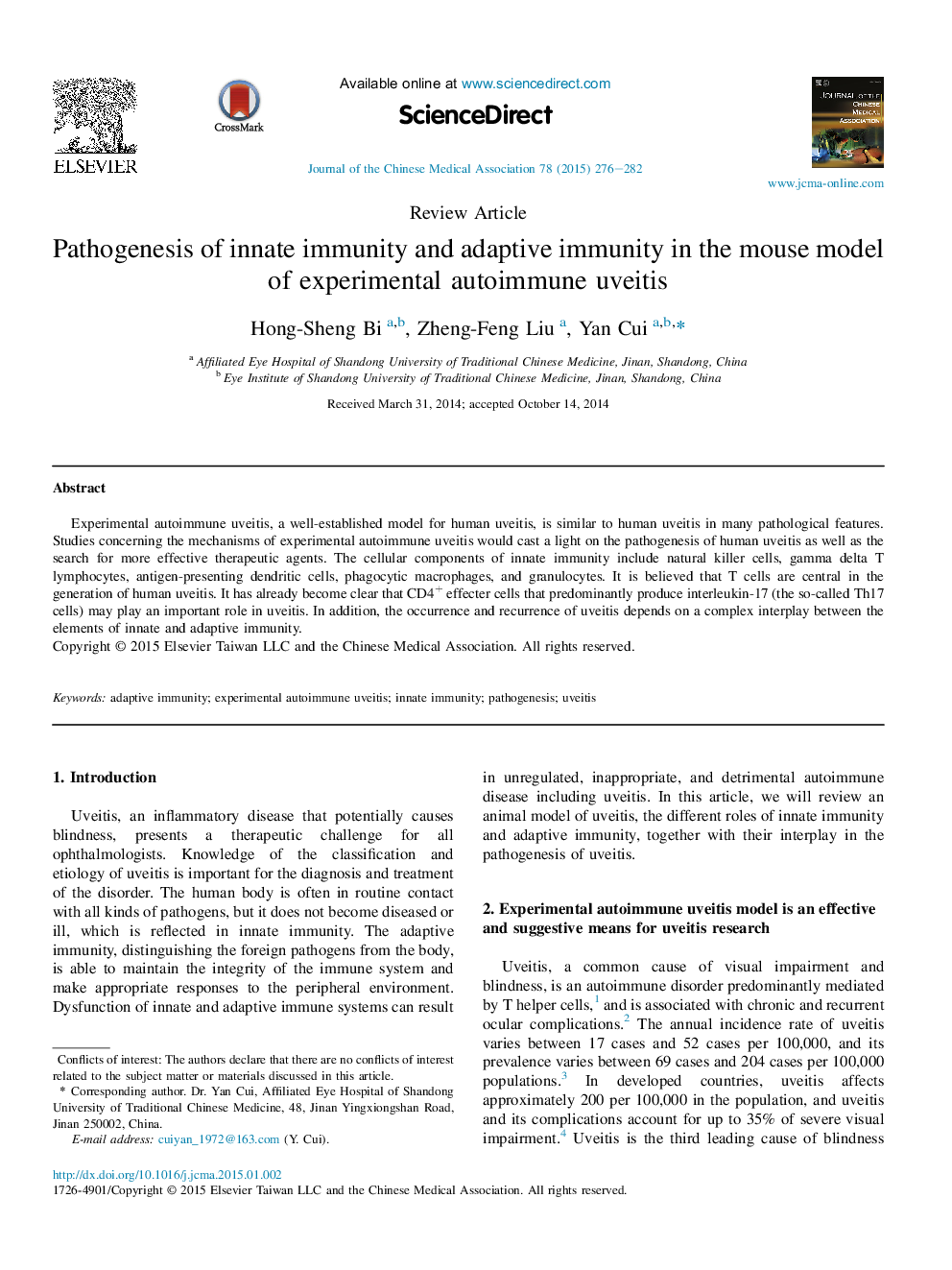| کد مقاله | کد نشریه | سال انتشار | مقاله انگلیسی | نسخه تمام متن |
|---|---|---|---|---|
| 3476093 | 1233240 | 2015 | 7 صفحه PDF | دانلود رایگان |
Experimental autoimmune uveitis, a well-established model for human uveitis, is similar to human uveitis in many pathological features. Studies concerning the mechanisms of experimental autoimmune uveitis would cast a light on the pathogenesis of human uveitis as well as the search for more effective therapeutic agents. The cellular components of innate immunity include natural killer cells, gamma delta T lymphocytes, antigen-presenting dendritic cells, phagocytic macrophages, and granulocytes. It is believed that T cells are central in the generation of human uveitis. It has already become clear that CD4+ effecter cells that predominantly produce interleukin-17 (the so-called Th17 cells) may play an important role in uveitis. In addition, the occurrence and recurrence of uveitis depends on a complex interplay between the elements of innate and adaptive immunity.
Journal: Journal of the Chinese Medical Association - Volume 78, Issue 5, May 2015, Pages 276–282
